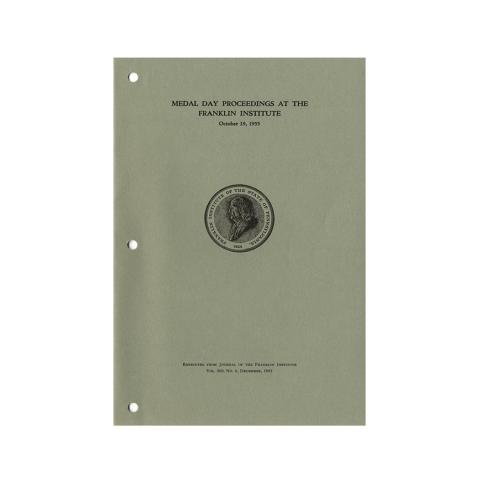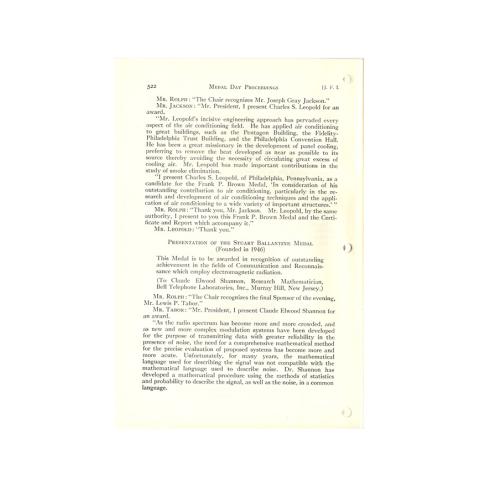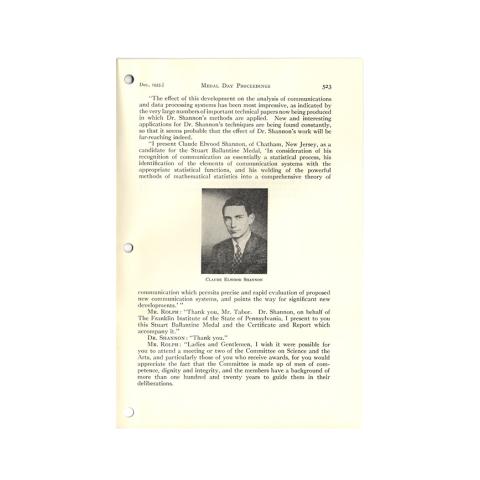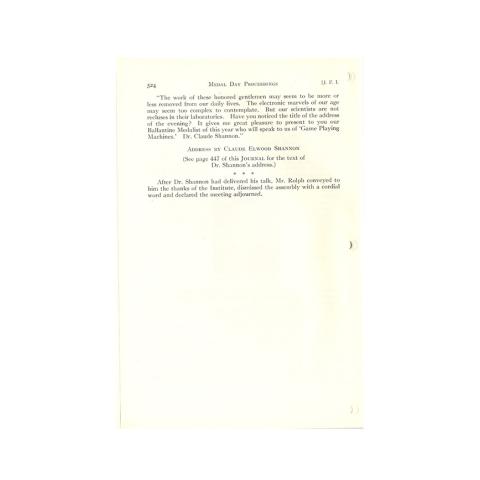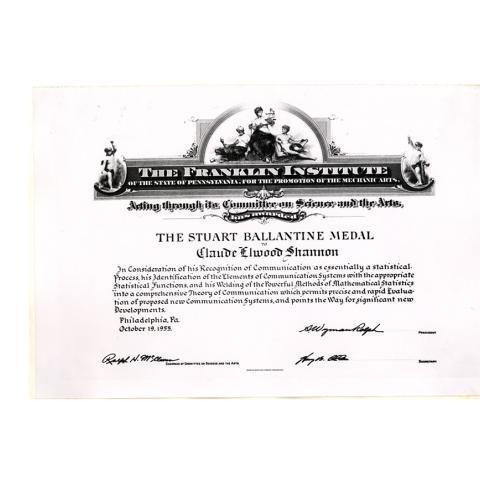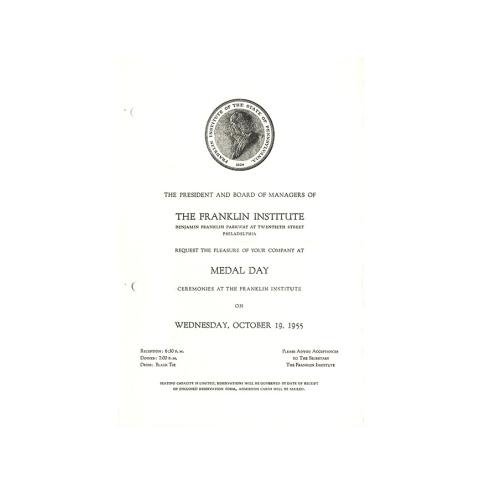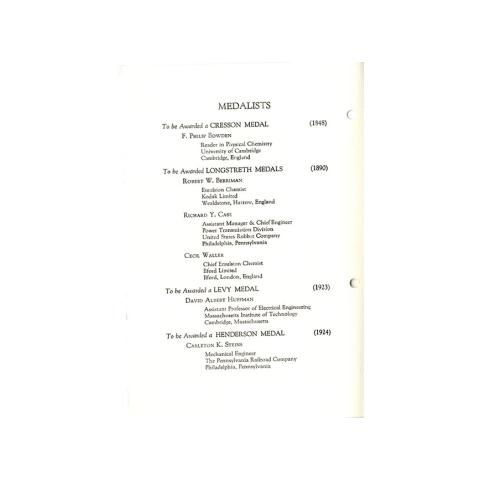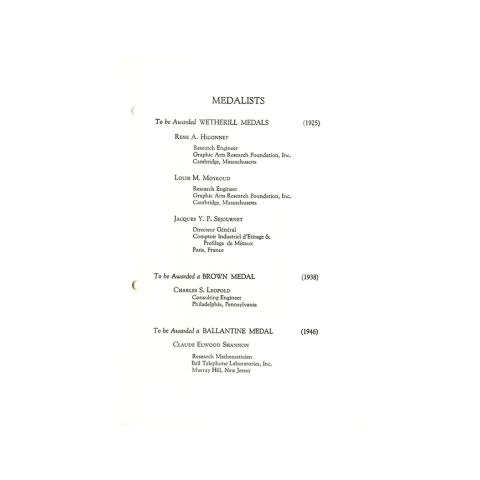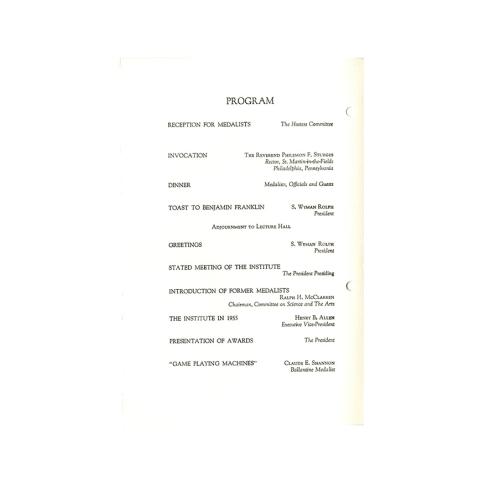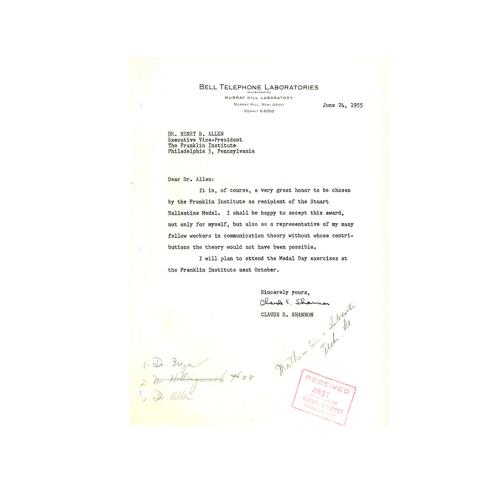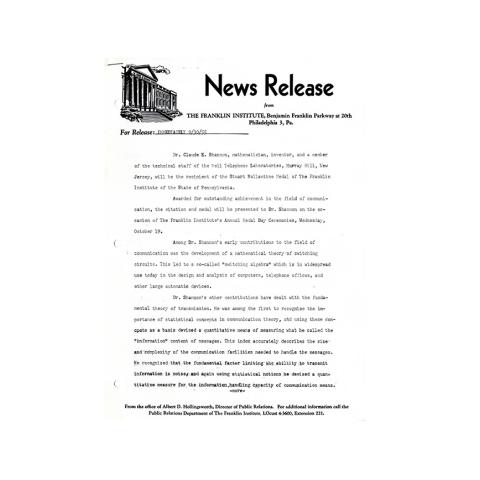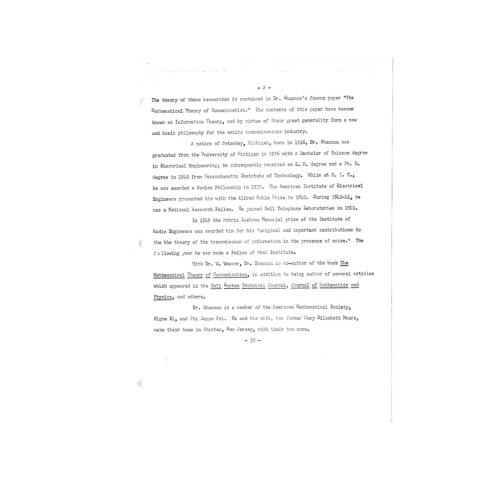
Introduction
Dr. Claude Elwood Shannon used mathematics to unify communication theory. His pioneering work revolutionized the field of communication and information technology, and his lively personality and active imagination endeared him to his friends, family and fellow communication theorists.
Shannon reflected on the subject of information technology: "The growth of both communication and computing devices has been explosive in the last century. It was about a hundred years ago that the telephone and phonograph were invented, and these were followed by radio, motion pictures and television. We now have vacuum tubes, transistors, integrated circuits, satellite communication and microwave cable. We have even talked to astronauts on the moon. Our life style has been totally changed by advances in communication."
Who was Claude Shannon? How does mathematics relate to the field of communication?
Gadgets and Gizmos
As a young child, Claude Elwood Shannon could be found tinkering with gadgets of his own construction in his home in Petosky, Michigan. He constructed model planes and ingeniously wired a telegraph system between his house and home of one of his friends, who lived half a mile away. This fascination with gadgets would follow Shannon throughout his life. Though history remembers him chiefly for his contributions to the science of Communications, he delighted in manipulating mechanics to create gizmos ranging from a rocket-powered Frisbee to a computer cleverly called THROBAC (THrifty ROman numerical BAckward looking Computer) that performed calculations using Roman numerals. By all accounts, Shannon had a jovial, adventurous personality as well as a formidable intellect. He was known by his colleagues at Bell Telephone Labs for his achievements in the field of communication, and for his ability to juggle while riding a unicycle through the halls of Bell Labs.
Chessman
Shannon had a particular fascination with chess, and he researched and wrote a paper entitled "Programming a Computer for Playing Chess." When Shannon published the paper in the 1950s, computers were still in their early stages of development and were thus quite difficult to program. Though Shannon came up with his chess program in the early days of the computing age, many of the chess-playing programs that have since been developed have closely followed the system described in his paper. In 1965, Shannon took pleasure in meeting reigning World Chess Champion Mikhail Botvinnik of Russia. The two men squared off in a chess match, and after forty-two moves Shannon admitted defeat.
A Musical Mathematician
Shannon enjoyed music and poetry as well as mathematics. He played Dixieland music on his clarinet and owned eight Russian instruments, including a bassoon and a balalaika, acquired during a trip to Russia. Many of his papers were translated into Russian, and while on a visit to the country, he was informed that they had collected several thousand rubles in royalties. This amount was equivalent to roughly the same amount in dollars, but Shannon was not permitted to take the money out of Russia. He decided to spend it on the aforementioned instruments, and he and his traveling companions were frequently mistaken for a traveling orchestra on their trip back to the United States.
Communications as a Statistical Science
The Franklin Institute presented Shannon with the Stuart Ballantine Medal in 1955. Shannon was selected for this award, "In consideration of his recognition of communication as essentially a statistical process, his identification of the elements of the communication systems with the appropriate statistical functions, and his welding of the powerful methods of mathematical statistics into a comprehensive theory of communication which permits precise and rapid evaluation of proposed new communication systems, and points the way for significant new developments."
Shannon's many publications and accolades attest to the acute nature of his intelligence, and his application of statistical functions to the field of communications was published in a complex paper entitled, "The Mathematical Theory of Communication." In a broad sense, Shannon was able to represent various forms of communication (the human voice, musical sounds, etc) mathematically. To achieve this representation, Shannon used statistical formulas which take into account probability and change: two measures important for representing forms of communication.
Interested in learning more about Claude Elwood Shannon? Learn More About His Ballantine Award
Communication Systems
In any given communication system (take a telephone conversation, for example), there is an information source, or sender, who is attempting to convey a message (like, "Happy Birthday!") to a receiver. That message is changed into an electronic signal by a transmitter (like a telephone mouthpiece), and the signal is then sent over a communication channel (like a telephone line) to reach the receiver. Any communication channel necessarily has a certain capacity; that is, a certain limit on the amount of signal information it can carry. If a signal exceeds the capacity of a communication channel, then that signal cannot be transmitted. In "The Mathematical Theory of Communication," Shannon used this formula to measure the capacity of a communication channel:
log n(T)
T
In this formula, n(T) represents the number of signals of duration (T) which the communication channel is able to carry as (T) approaches infinity.
Bring in the Noise
When a message is transmitted through a communication system, the message is altered from its original state by outside additions which the information source, or sender, did not intend to be part of the message. Any changes that are made to a communication signal as it travels through a communication channel are known as noise: static in a radio, distortions of sound in a phone conversation, alteration in shape of images on a television screen are all examples of noise that can compromises the integrity of a communication signal.
Keeping the Noise Down
Shannon used mathematics to find the optimal way to combat noise during transmission of communication signals. Shannon was able to define the entropy and the equivocation of signals using statistical formulas and then to use these measurements to determine the capacity of a given communication channel. In data transmission, entropy is a measure of the loss of information in a transmitted signal or message. Equivocation is the average ambiguity of the received signal. Shannon calculated channel capacity by finding the maximum difference the entropy and the equivocation of a signal in a communication system. He represented this formulaically with the following:
C = Max (H(x) - Hy(x))
This formula improves on his previous formula (above) by accounting for noise in the message.
Statistical Relationships
In "A Mathematical Theory of Communication," Shannon successfully showed that channel capacity, electronic signals, and noise can all be represented mathematically by using statistical functions, and thus can all be related to one another with statistics. This point is articulated by Franklin Institute Committee on Science and the Arts Chairman Tabor with the following:
"It seems to be agreed that thermal noise, atmospheric noise, and all of the kinds of what we have for many years called 'noise' can be described nicely by statistical functions...It seems to me that one of the most important things Shannon has done is to show how the signal can be described by statistical functions, so that signal and noise can both be handled simultaneously by the same mathematical methods."
Shannon's theory revolutionized the field of communication because it established a statistical relationship among the various elements of a communication system, allowing communication scientists to better understand the electronic relationships necessary for successful communication. Once they could better understand these relationships, they were better able to develop technologies that improved the field of communication. Conceiving of communication as a statistics-based science, as Shannon did, allowed for more precise calculations and more accurate communication methods.
Cryptic
Shannon penned a paper entitled "Communication Theory of Secrecy Systems" in which he related cryptography, the science of secret writing and codes, to communication in a noisy communication channel. He identified the "noise" as the scrambling done by the key of the cryptographic system. The quality of his theory impressed the United States Government, and Shannon was appointed as a government consultant on cryptographic matters.
Sharing the Limelight
Shannon's humility is seen in the words of thanks he wrote to The Franklin Institute after learning of his receipt of the Ballantine Medal: "I shall be happy to accept this award, not only for myself, but also as a representative of my many fellow workers in communication theory without whose contributions the theory would not have been possible."
True to his words, Shannon built upon and related the work of many other communication theorists when crafting his "Mathematical Theory of Communication." The summary following the report compiled by The Franklin Institute Committee on Science and the Arts gives a concise explanation of this achievement:
"Dr. Shannon has recognized that complete communication processes can be studied by statistical methods, and has chosen appropriate statistical functions for the elements of the systems. In many cases, there is considerable background in the literature regarding the properties of the models he has selected. He has organized this material into a comprehensive theory, with appropriate extensions, to permit the overall study of complete communication systems of great complexity. This makes it possible to indicate methods by which performance for any particular application may be optimized, and permits rapid and precise comparison of the over-all characteristics of complex systems."
A Vast Array of Accolades
Claude Shannon has been nationally and internationally recognized for his contributions to science with numerous honorary degrees, awards, and prestigious fellowships and memberships in academic honor societies. Among his awards are an Alfred Nobel Prize and a National Medal of Science, and among his honorary degree conferrers are Yale, Princeton and Oxford University. He was a Bolles Fellow at the Michigan Institute of Technology (MIT) and a National Research Fellow at the Institute for Advanced Study in Princeton, as well as a member of the National Academy of Sciences and the American Mathematical Society.
The Claude Elwood Shannon presentation was made possible by support from The Barra Foundation and Unisys.
Read the Committee on Science and the Arts Report on Claude Elwood Shannon’s work in communication as a statistical process.


